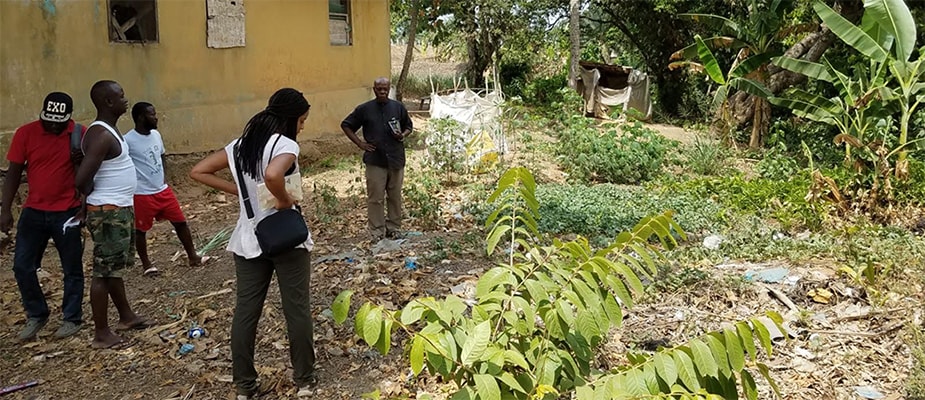Global Disease Detection Supplement
Ten Years of Global Disease Detection and Counting: Program Accomplishments and Lessons Learned in Building Global Health Security

EIS Officer Dr. Nailah Smith conducting a site visit for the Lassa fever control plan in Liberia.
The highly-anticipated BioMed Central (BMC) journal supplement, “Ten Years of Global Disease Detection and Counting: Program Accomplishments and Lessons Learned in Building Global Health Security,” highlights the successes and lessons learned through CDC’s Global Disease Detection (GDD) program and its Regional Centers (RCs) around the world that have laid a foundation to further global health security around the world and the United States.
With 10 RCs that support more than 100 countries, the GDD program conducted groundbreaking public health research, detected diseases before they became significant threats, developed or deployed new laboratory tests to identify sources of illness, established collaborative workforce training programs such as the Field Epidemiology Training Program, and built in-country capacity to respond faster and smarter to outbreaks.
Global Disease Detection Supplement
- Ten Years of Global Disease Detection and Counting: Lessons in Building Global Health Security
- Progress in Public Health Risk Communications in China: Lessons Learned from SARS to H7N9
- A ten-year China-US laboratory collaboration: Improving response to influenza threats in China and the world, 2004—2014
- An educational intervention to promote appropriate antibiotic use for acute respiratory infections in a district in Egypt—pilot study
- An evaluation of the hepatitis C testing, care and treatment program in the country of Georgia’s corrections system, December 2013 – April 2015
- Hepatitis C prevalence and risk factors in Georgia, 2015: setting a baseline for elimination
- Hospitalization and death among patients with influenza, Guatemala, 2008–2012
- Challenges and solutions for instituting an efficient maintenance program for laboratory equipment in Central Asian, and developing world, countries
- South Africa Field Epidemiology Training Program: Developing and building applied epidemiology capacity, 2007—2016
- Jaundice Outbreak likely caused by HEV in Amritsar, Punjab, India, 2013
- Successes and challenges of the One Health approach in Kenya over the last decade
- Capacity assessment of the health laboratory system in two resource-limited provinces in China
- Burden of laboratory-confirmed shigellosis infections in Guatemala 2007-2012: results from a population-based surveillance system
- Enhanced surveillance for severe pneumonia, Thailand 2010-2015
- Population-based Bloodstream Infection Surveillance in rural Thailand, 2007-2014
- The burden of non-communicable Diseases and their related risk factors in the country of Georgia, 2015
- A Cutaneous Anthrax Outbreak in Koraput District of Odisha-India 2015
- Inappropriate Use of Antibiotics for Childhood Diarrhea Case Management—Kenya, 2009–2016
- Building Laboratory Capacity to Detect and Characterize Pathogens of Public and GLobal Health Security Concern in Kenya
- The cost of influenza-associated hospitalizations and outpatient visits in Kenya
- Regional Approaches for Enhancing Global Health Security





















.jpg)










No hay comentarios:
Publicar un comentario